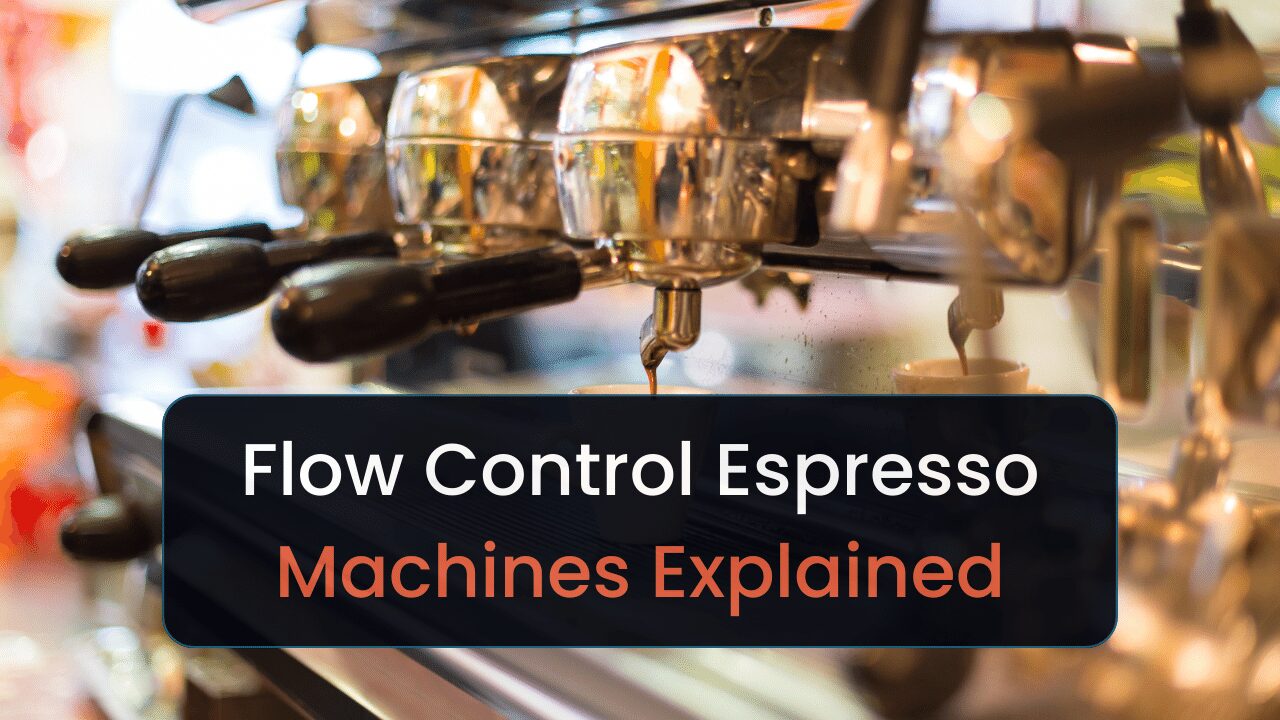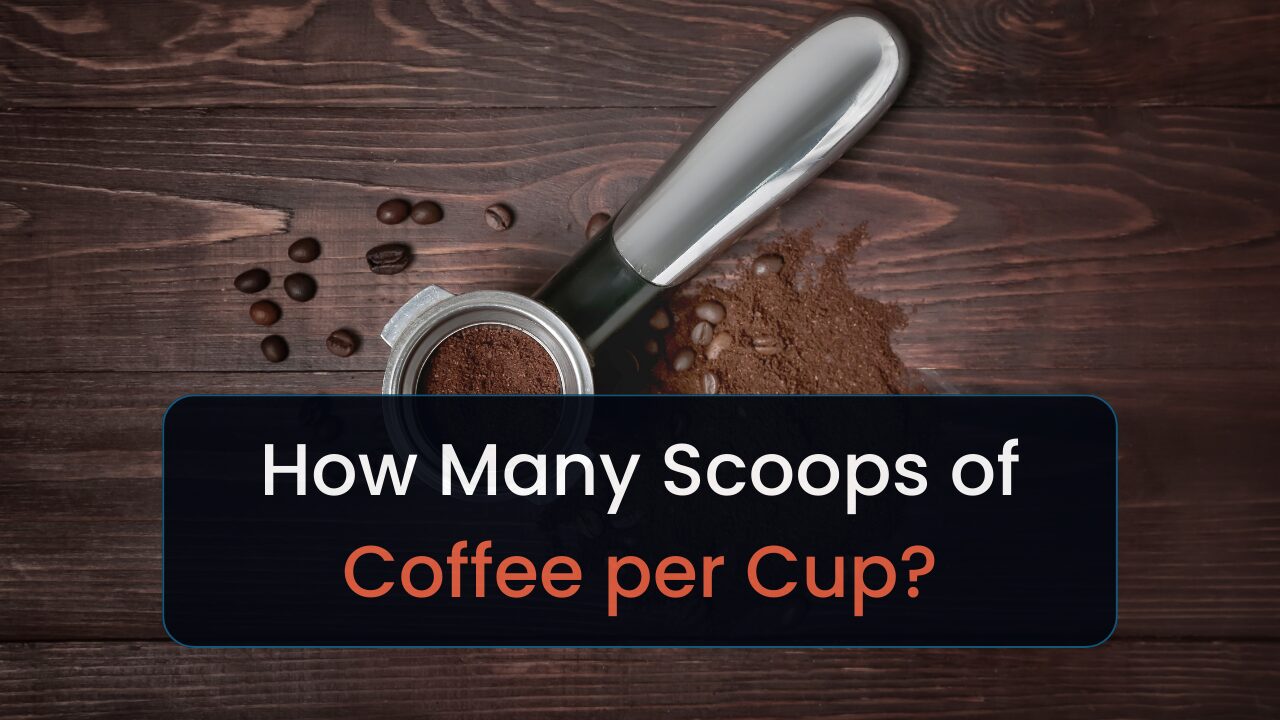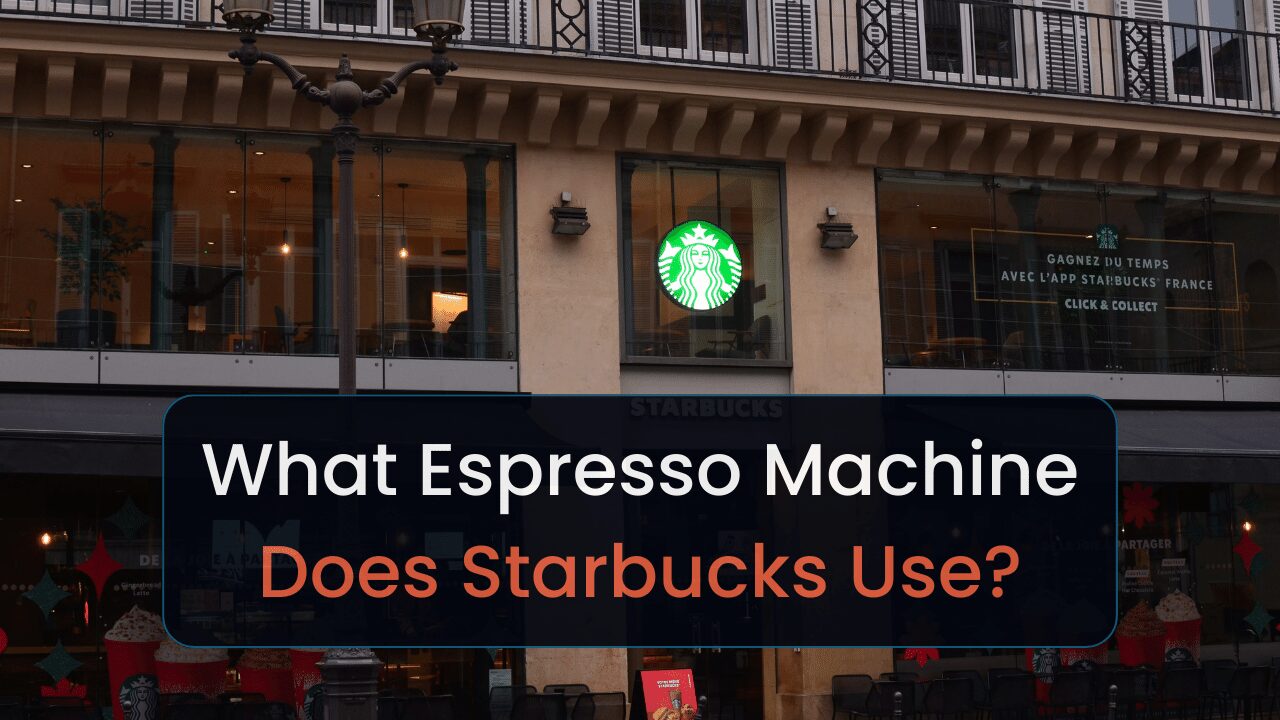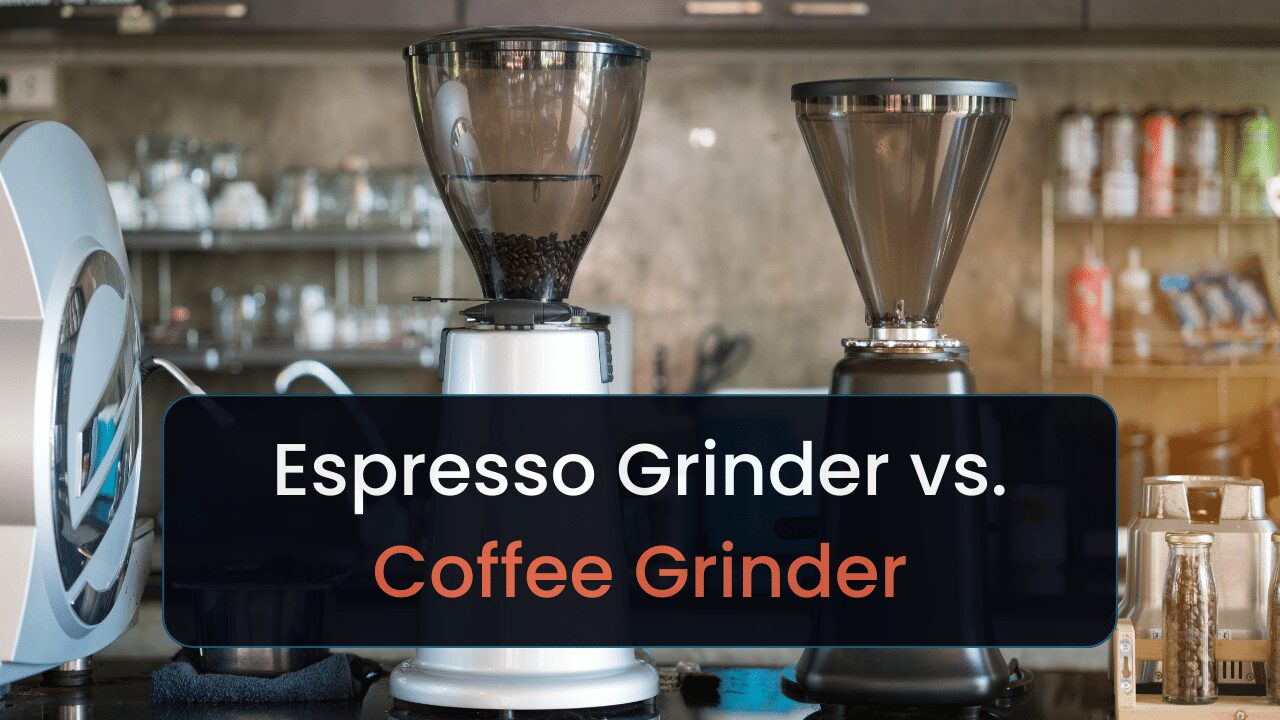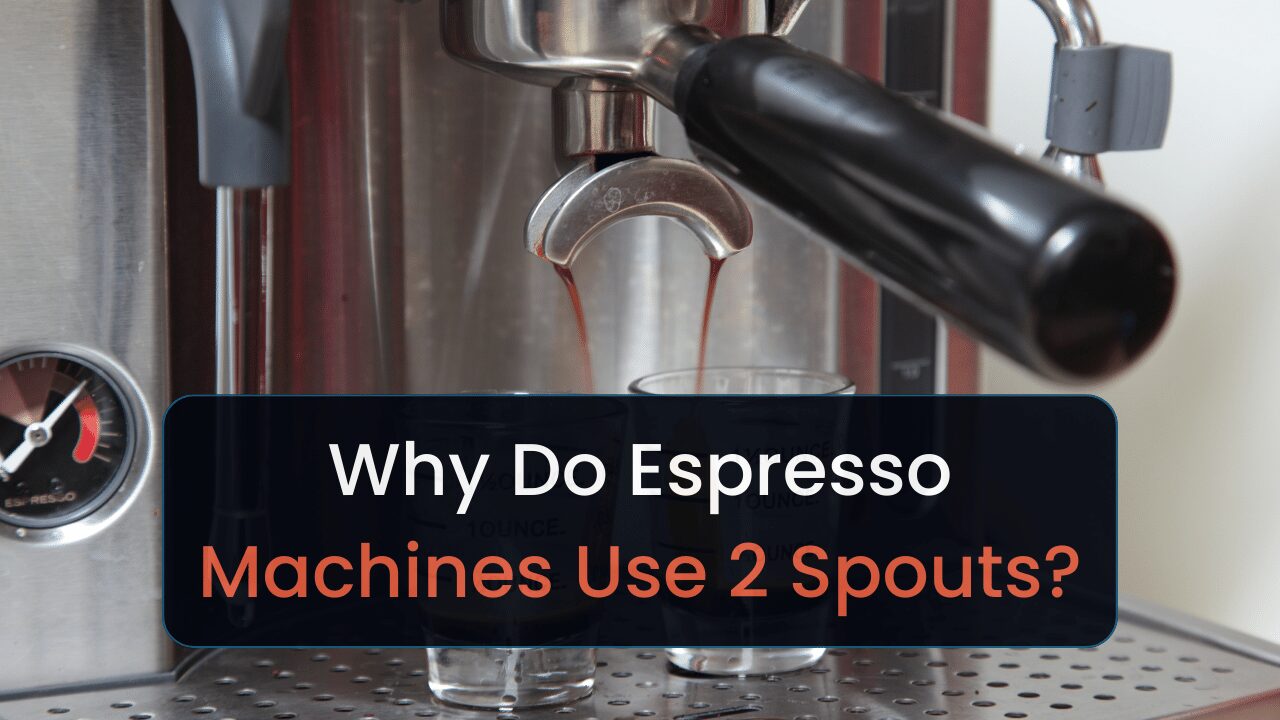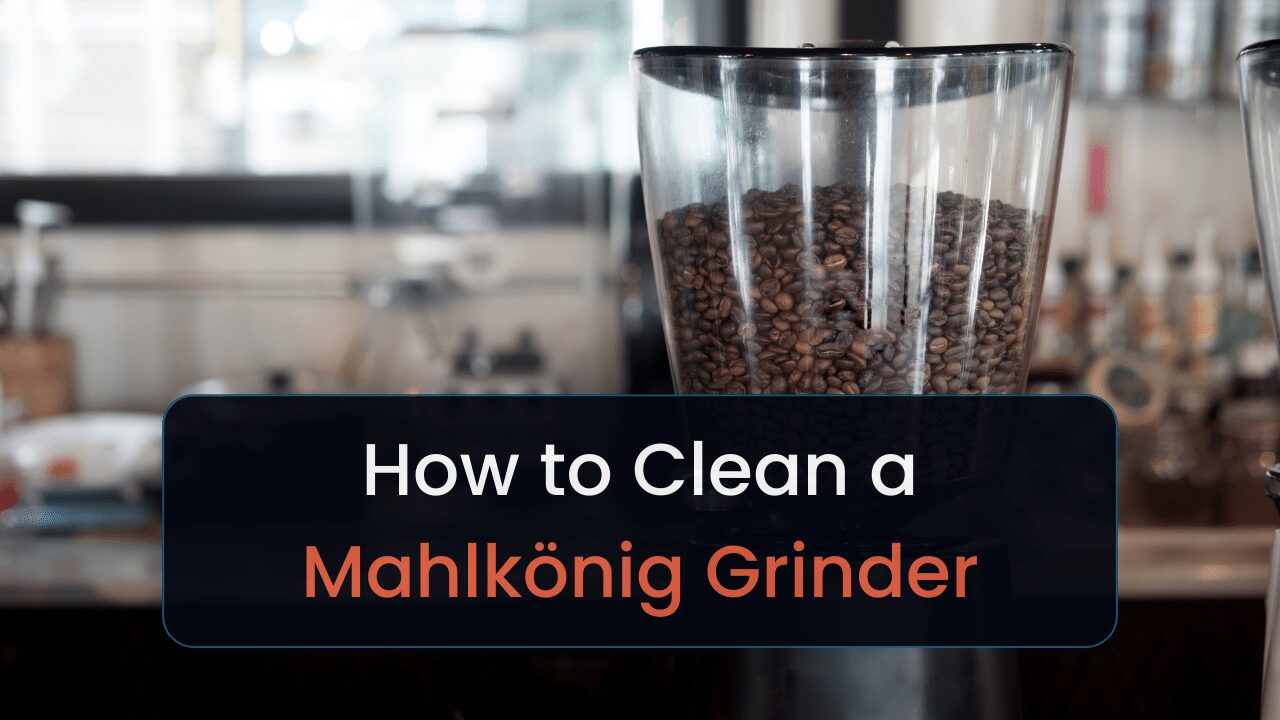I want to find the best coffee machine, which inspired me to gather all the best aspects of coffee makers into a single blog post.
I’ll cover every factor you should consider when shopping from a coffee machine for your home or business. Once you’re finished reading, you’ll have an idea of what’s important to consider.
Let’s dive in.
Key Takeaways
- Coffee maker types will make the biggest difference when considering coffee makers.
- Materials will determine your machine’s lifespan.
- Consider whether you need single- or group-serve coffee.
- Think about features that would make your coffee making easier.
How to Choose the Best Coffee Maker for Home
Here’s what to consider when shopping for a coffee maker:
| Factors to Consider | Why it is Critical |
| Types of Coffee Makers | Determine the size, features, & price of the coffee maker. |
| Features | Affects cost, ease of use, & brewing process. |
| Price & Warranty | Price will depend on the features, brand, and materials. The warranty will protect you in case it breaks down. |
| Brewable Drinks & Flavor | Determines the variety of drinks you can make & the flavor of the coffee. |
| Size & Weight | Will determine how much space it takes up & how easy it is to move. |
| Life Expectancy | How long it’ll last. |
| Materials | Affect the taste of the coffee, machine durability, & the ease of cleaning. |
| Ease of Use & Cleaning | Impacts how much time & effort you need to spend on maintaining the coffee maker. |
| Pods vs. No Pods | Could simplify coffee making. |
| Bars of Pressure | The bars of pressure determine the strength of espresso. |
| Single-Serve vs. Carafe | Whether you need to serve yourself or groups. |
| Brand | Can affect the quality, durability, & price of the coffee maker. |
The following sections will explain why each feature is important to consider when shopping for a home or commercial coffee maker. I’ll also provide tips that’ll help you with shopping.
Let’s go.
1. Types of Coffee Makers
The type of coffee maker you get will determine how much control you have over your drink, how it tastes, and the effort you need to put into brewing.
Let’s compare all the types of coffee makers out there:
| Coffee Maker Type | Description | Avg. Price * |
| Drip Coffee | Pours hot water over ground coffee in a filter, then drips the coffee into a carafe. | $20–100 |
| Manual Pour-Over | Pours hot water over ground coffee in a filter, then allows the coffee to drip into a carafe. | $15–100 |
| French Press | Steeps ground coffee in hot water for a few minutes, then presses the grounds down to separate them from the coffee. | $20–100 |
| AeroPress | Uses a plunging mechanism to force hot water through ground coffee. | $30–100 |
| Moka Pot | Uses steam pressure to brew coffee. | $20–100 |
| Percolator | Pours hot water over ground coffee in a chamber, then recirculates the water through the coffee grounds. | $20–120 |
| Cold Brew | Steeps ground coffee in cold water for 12–24 hours. | $30–150 |
| Capsule Machine | Uses pre-measured capsules of coffee to brew a single cup of coffee. | $50–200 |
| Nel Drip | A pour-over method that uses a special type of filter that allows the coffee to drip slowly. | $20–50 |
| Phin | Uses a conical filter to brew coffee. | $20–50 |
| Walküre | Uses a unique brewing method to produce coffee. | $100–500 |
| Espresso Machine | Uses pressure to force hot water through finely ground coffee. | $100–5,000 |
Here’s who should get each type of coffee maker:
- Drip coffee: Serving black coffee to large groups of people.
- Thermal coffee maker: Keeps that coffee hotter for longer w/o a warming plate.
- Manual pour-over: Provides the most control over brewing parameters (e.g., temperature & water flow).
- French Press: Beginner-friendly; doesn’t require filters or timing.
- AeroPress: Excellent for travelers or coffee drinkers with diverse needs.
- Moka Pot: Camping for 1 or 2 people due to its durability & doesn’t require electricity.
- Percolator: Camping for groups & also doesn’t require electricity.
- Cold Brew: Less acidic coffee that’ll go down smoother than most beverages.
- Capsule Maker: Office workers, students, or anyone who wants to make coffee quickly w/ minimal cleanup.
- Espresso Machine: The machine you’ll want determines on your desired control.
- Manual: Most control over espresso brewing parameters.
- Semi-automatic: Control over brewing & drink temperature consistency.
- Automatic: Balances automation, price, & control.
- Super-automatic: Sacrifice control for automation.
Phin (Vietnamese coffee maker), Walküre, and Nel Drip makers are niche devices and are best for coffee enthusiasts. However, Phin makers are portable and don’t require any filters. But will produce robust coffee.
I will also not talk about these 3 throughout the rest of the guide, since they’re niche. Just know they all produce black coffee.
Espresso and drip coffee makers are the only business-compatible makers on this list. All the others listed work best for home use.
Let’s see each machine’s advantages and disadvantages.
Pros & Cons of Each Type of Coffee Maker
Compare the pros and cons of each type of coffee maker:
| Coffee Maker Type | Pros | Cons |
| Drip Coffee | Easy to use, affordable, & makes a large amount of coffee. | Inconsistent, & the coffee can taste weak or watery. |
| Manual Pour-Over | More control over the brewing process. | More time-consuming & requires more effort than a drip coffee maker. |
| French Press | Produces a full-bodied & flavorful cup of coffee. | Messy. |
| AeroPress | Portable & durable. | Difficult to master, & expensive filters. |
| Moka Pot | Produces a strong & concentrated cup of coffee similar to espresso. | Difficult to control the brewing process, & could have bitter coffee. |
| Percolator | Makes a large amount of coffee quickly. | Can produce a bitter cup of coffee. |
| Cold Brew | Produces a smooth & mellow cup of coffee. | Time-consuming, & often has sediment. |
| Capsule Machine | Convenient & easy to use. | Expensive, & the capsules create a lot of waste. |
| Nel Drip | Produces a smooth & flavorful cup of coffee. | Difficult to find the special filters. |
| Phin | Produces a strong & concentrated cup of coffee. | Coffee is often too strong. |
| Walküre | Produces a unique & flavorful cup of coffee. | Difficult to find, & expensive. |
| Espresso Machine | Produces a concentrated coffee used to make espresso drinks. | Expensive & requires more skill than other coffee makers. |
Now check out features that could make your life easier and suck more money from your wallet.
2. Features of Coffee Makers
Let’s talk about a bunch of different features drip coffee makers (and others) could include that would make your life easier:
| Feature | What it does | How it makes life easier |
| Programmable timer | Brews coffee at a specific time. | Wakes you up to the smell of freshly brewed coffee. |
| Keep-warm function | Keeps coffee hot for an extended period of time. | No need to rush to make coffee before it gets cold. |
| Auto shut-off | Turns off the coffee maker after a certain period of time. | Prevents coffee from overbrewing & burning. |
| Removable water reservoir | Easy to fill & clean. | No need to struggle to lift a heavy carafe. |
| Permanent filter | No need to buy paper filters. | Saves money & reduces waste. |
| Pause & serve function | Allows you to pour a cup of coffee without interrupting the brewing process. | Convenient for when you’re in a hurry. |
| Hot water function | Dispenses hot water for tea or other beverages. | No need to boil water on the stove. |
| Milk Frother | Creates foam for cappuccinos & lattes. | Makes it easy to enjoy your favorite coffee drinks at home. |
| Wi-Fi connectivity | Allows you to control the coffee maker from your smartphone. | Convenient for brewing coffee from bed or the office. |
| Voice control | Allows you to control the coffee maker with your voice. | Hands-free operation for ultimate convenience. |
| With Grinder | Grinds coffee beans in same machine. | Grind beans w/o transferring machines. |
| Thermal Carafe | Double-walled stainless steel keeps drinks warmer for longer. | Keep your coffee warmer for longer. |
| Commercial Use | Machine has durable enough parts to withstand constant use. | Works with businesses. |
| Pod Compatible | Supports capsules (e.g., Nespresso). | Makes cleaning & brewing easier. |
| Includes Water Filter | Filters out chlorine & other chemicals. | Cleaner-tasting coffee. |
| Brew Strength Selector | Choose how strong you want your coffee. | More automated strength options. |
Most drip coffee makers will have a programmable timer, a warming plate, a permanent filter, and a pause-and-serve function. Few will include Wi-Fi connectivity, hot water dispensers, and automatic shutoff.
Mitigate the automatic shutoff issue by spending around $30 on a smart plug. The same goes for machines that lack programmability—many Keurig and Nespresso models.
Regarding reusable filters, you’ll see Gold Tone or stainless steel. Opt for the former if you have the option. It doesn’t accumulate as many oils as stainless steel ones, which results in cleaner-tasting coffee. However, both filter types don’t produce as clean of tasting coffee as paper filters.
Due to having mesh, it’s more likely finer coffee grounds will escape the filter basket and accumulate sediment in your drink. However, having paper filters can prove wasteful and leave a decent-sized hole in your wallet over a long period.
Almost all black coffee makers, Nespresso and Keurig machines, and other capsule makers won’t include a milk frother or steam wand, essential tools used to steam or froth milk to create lattes and cappuccinos.
No manual makers (percolator, moka pot, and AeroPress) will have a milk frother. You must buy a separate milk frother in this case.
None of these features, except the hot water function, apply to commercial machines. With those types of makers, you’ll want machines that brew high-quality coffee quickly.
Here’s what “features” will impact your maker.
3. Price & Warranty
Drip coffee makers will cost as low as $20 and high as $500. The more you pay, the more features included and control you’ll have over brewing parameters. For instance, the Breville Precise Brewer sits at around $300 but offers more control than most coffee makers.
Most commercial coffee and espresso machines will cost more than $2,000.
Also, whether the machine’s Specialty Coffee Association (SCA) approval could raise the price. According to the coffee-focused organization, this coffee maker will brew coffee to optimal specifications.
It also means the maker passed many tests.
Higher-priced coffee makers, espresso or black coffee, will have more features, stainless steel bodies, and components. They’ll last significantly longer than their cheaper counterparts, which COULD save money in the long run.
You’ll also want peace of mind when getting your investment.
That’s where warranties enter the picture. Coffee maker warranties typically cover defects in materials and workmanship for 1 to 2 years [1]. Some warranties may also cover labor costs for repairs.
Many moka pots and percolators have warranties that’ll last 5 or more years since these machines are just chunks of steel. Most electric coffee makers (drip or espresso) have 1- to 2-year warranties.
Most coffee makers will outlive their warranties with proper care and maintenance. However, you could get unlucky and get a device that didn’t come from the factory in working condition.
Now let’s dive into talking about flavor.
4. Drinks It Can Make & Favor
Most coffee makers have the ability to brew these drinks:
| Americano | Black coffee | Espresso shots |
| Black Eye | Mocha | Irish Coffee |
| Cappuccino | Macchiato | Lazy Eye |
| Latte | Flat White | Lungo |
| Doppio | Ristretto |
The following coffee makers will brew black coffee:
- Nespresso Vertuo Line machines
- Drip coffee
- Manual pour-over
- French press
- Keurig
Percolators and moka pots produce concentrated coffee, which isn’t technically black coffee, but also not espresso. It’s not espresso since it uses around a single bar of pressure, doesn’t produce crema, and doesn’t go down smooth .
Almost all espresso machines can’t brew black coffee. You’ll find exceptions when considering combination espresso machines or some capsule makers. However, nearly all espresso makers include milk frothers or steam wands.
These’ll allow you to make flat white, lattes, and macchiatos. Most machines that produce black coffee don’t include such a feature.
Now that you know what your machine can produce, let’s see whether it fits in your kitchen.
5. Size & Weight
Coffee makers, on average, are around 6 to 12 inches high, 5 inches long, and 6 inches wide. Their size determines where you can place your machine. For instance, you can’t put it on a countertop if it’s too wide.
Too tall, and you can’t place it under wall cabinets.
Let’s dive further into wall cabinets. Most cabinets have at least 18 inches of space between the cabinet’s bottom and the countertop [2]. Many machines will fit under them until factoring in vertical clearance required.
Vertical clearance refers to the additional height your machine requires when opening the hatch to the water reservoir, filter bin, or pod slot. Most pod slots require a couple of inches of clearance. Many water reservoirs need 5 or more inches of vertical clearance.
Then you’ll need to hover a water pitcher over the reservoir to refill it, requiring more clearance. That’s when machine weight comes into play. The lighter your machine, the easier it is to move to a spot where you can refill it.
Many drip coffee makers and espresso machines will weigh 4 to 20 pounds. Other coffee makers will weigh up to 5 pounds.
Don’t want to deal with all this nonsense? Get a front-loading machine or a coffee maker with a water reservoir on the side instead of the rear. Most coffee makers will have reservoirs built into the machine’s back, which makes them a pain to access.
We’re changing course and talking about how long your machine could last.
6. Life Expectancy
Most higher-quality electric coffee makers will last around 5 years with proper care and maintenance. Makers without electrical components, like manual espresso makers or moka pots, will last 10 or more years.
These machines use higher-quality parts that resist wear and tear well. They also don’t have water reservoirs that could have mineral buildup or electrical components that could break down anytime.
Let’s check out the most significant factor that’ll impact your machine’s lifespan.
7. Machine & Carafe Materials
Materials will determine your machine’s cost and lifespan. Let’s compare common materials manufacturers use for their machines:
| Material | Pros | Cons |
| Plastic | Durable, lightweight, & affordable. | Prone to scratches & fading. |
| Stainless Steel | Durable, long-lasting, & easy to clean. | More expensive than plastic. |
| Glass | Transparent; watch the brewing process. | Fragile & difficult to clean. |
| Ceramic | Heat-resistant, non-stick, & easy to clean. | More expensive than plastic or stainless steel. |
| Aluminum | Conducts heat well; coffee brews quickly. | Prone to scratches & staining. |
Almost all manufacturers will use stainless steel or plastic when constructing drip coffee machines, espresso makers, and other types.
They’ll use aluminum or stainless steel to make percolators and moka pots. And glass and stainless steel for French press makers.
In addition to machine materials, consider the carafes. Glass carafes produce a cleaner-tasting coffee due to a lack of a metallic aftertaste. Stainless steel or aluminum carafes will keep drinks warmer for longer without relying on a warming plate.
Warming plates have the potential to burn coffee in glass carafes if they’re left on for more than 40 minutes, which eliminates their benefit—to keep your coffee warm for long periods.
Manual coffee makers generally have purely stainless steel bodies and components, which could allow them to last for more than 10 years (at least a tenth of your life).
If you’re searching for a commercial coffee or espresso machine, always opt for stainless steel. As it’ll withstand the constant use, you put it through.
Another thing that’ll improve your machine’s lifespan includes cleaning.
8. Ease of Use & Cleaning
Ease of use determines the user experience and ergonomics of your machine. Machines with easy-to-access analog buttons are more straightforward to use than touchscreens. However, analog controls present fewer options than the latter.
You also want a machine that’s easy to clean. The easier it is to clean, the more likely you are to build a habit out of cleaning, which is crucial to keeping your machine alive for longer. And for preventing bacteria and mineral buildup.
You’ll need to descale machines with water reservoirs every 6 to 12 months, or when the descaling notification light tells you to do so. And descale at least every 3 months if you live in an area with hard water.
Machines with removable parts like water tanks and drip trays are also easier to clean. Since you won’t need to dig into your machine with a sponge or rag.
Many higher-end coffee makers will include automatic cleaning functions to wash out the machine for you. This will make your life much easier and require less time to clean.
If you directly connect coffee makers to your water line, this could also reduce the amount needed to descale your machine. So long as the plumbing connection connects to a filter.
Here’s another factor that’ll impact ease of use.
9. Pods vs. No Pods
Compare coffee machines that use pods to ones that don’t:
| Feature | Pods | No Pods |
| Convenient | Yes, pods are pre-measured & pre-ground. | No, you need to measure & grind your own coffee beans. |
| Fast | Pods brew quickly | No, it can take longer to brew coffee without pods. |
| Easy to Clean | Pods are disposable. | No, you need to clean the coffee maker after each use. |
| Variety of coffees | Many different types of pods available. | No, you are limited to the coffee beans that you have on hand. |
| Cost | Costs more. | Costs less. |
| Waste | Produces more waste. | Produces less waste; coffee grounds are reusable. |
A pod machine works best if you want a convenient and easy-to-use coffee maker. However, if you are concerned about the environmental impact of pods or wish to have more control over the brewing process, opt out of using pods.
Almost all pod machines are solely viable for serving single cups of coffee. Machines without pods can serve multiple cups of coffee and single serve. However, Nespresso Vertuo machines and some Keurig models can serve carafes.
It depends on whether you have a dual coffee maker.
We will shift gears and talk about espresso machines for a second.
10. Bars of Pressure (Espresso Machines Only)
At least 9 bars of pressure is optimal for espresso machines to brew coffee [3]. Though, many suggest that 7–11 bars are also optimal.
Here’s a list that’ll explain everything:
- <7 bars: Under-extracted; too sour.
- 7–9 bars: Mild flavor & a bit sour.
- 9 bars: Balanced flavor.
- 15 bars: Stronger-tasting drink, but not too bitter.
- >15 bars: Over-extracted drink; too bitter.
What are “bars”?
Manufacturers use bars as the measurement for the pressure of an espresso machine. It’s crucial because bars determine the quality of the espresso.
When water forces through finely-ground coffee at high pressure, it extracts its oils and flavors. This is what gives espresso its rich and concentrated flavor.
Under 7 bars of pressure will cause you to under-extract your drink and make it too sour. Going over 15 bars will cause you to over-extract it and make it too bitter.
Most espresso machines will utilize 9 bars of pressure, even if they state they use more. Except for Nespresso machines. They use 19 bars of pressure because they need to blast water through aluminum pods.
Speaking of single-serve machines.
11. Single-Serve vs. Serving Groups / Capacity
Single-serve coffee makers encompass most pod machines with tiny water reservoirs. These are best for compact spaces and are excellent additions to small rooms, offices, and more.
You’ll need to refill the water reservoirs more frequently than machines with larger reservoirs.
And just because a tank has a larger reservoir doesn’t mean it’s not single-serve. Many Keurig and Nespresso makers have decent-sized reservoirs, but can only brew single cups due to brewing with pods.
Some Nespresso and Keurig models will brew full carafes of coffee.
Stick with percolators and drip coffee makers to serve groups of 3 or more people with black coffee.
There’s no such thing as an espresso maker that’ll brew for groups. The best you could get is a machine that heats and brews quickly to accommodate groups of folks.
All commercial espresso machines are single-serve, but heat faster to accommodate serving a lot of guests. Otherwise, you’ll need coffee makers with large carafes and water reservoirs to serve guests.
Coffee makers with larger reservoirs allow you to make more coffee for people without having to refill. Reducing downtime while you’re entertaining guests. Smaller reservoirs work better for serving 1 or 2 folks coffee.
Or you could go for coffee makers that serve specific amounts of cups such as:
There’s one more factor we need to discuss.
12. Brand
Common brands that manufacture coffee makers include:
| Manufacturer Brand | Drip Coffee | Percolators | Moka Pots | Espresso Maker | Pour-Over | Capsule |
| Breville | ⬤ | ⬤ | ⬤ | |||
| Cuisinart | ⬤ | ⬤ | ||||
| De’Longhi | ⬤ | ⬤ | ⬤ | |||
| Hamilton Beach | ⬤ | ⬤ | ||||
| Mr. Coffee | ⬤ | ⬤ | ||||
| Ninja | ⬤ | ⬤ | ⬤ | ⬤ | ||
| Oster | ⬤ | ⬤ | ||||
| Philips | ⬤ | ⬤ | ||||
| Sage Appliances | ⬤ | ⬤ | ⬤ | |||
| Technivorm | ⬤ | ⬤ | ||||
| Bialetti | ⬤ | |||||
| Flair | ⬤ | ⬤ | ||||
| Hario | ⬤ | |||||
| Yamazaki | ⬤ | |||||
| Nespresso | ⬤ | |||||
| Keurig | ⬤ | |||||
| Farberware | ⬤ | ⬤ | ||||
| Bunn | ⬤ | |||||
| JURA | ⬤ | |||||
| La Marzocco | ⬤ |
The brand you choose will determine the coffee maker’s quality, warranty period, price, and features it’ll include. Nespresso makers tend to cost at least over $100, while many Mr. Coffee makers cost under $100.
And many manufacturers have general warranties for their devices. For instance, Nespresso has a 1- to 2-year warranty on all their machines.
Bunn makes commercial drip coffee makers. JURA makes super-automatic espresso makers. And La Marzocco manufactures commercial semi-automatic espresso machines. However, there are plenty of business coffee maker manufacturers I didn’t include.
Research each brand and select which one has the best machines to suit your lifestyle.
What Is a Coffee Maker?
A coffee maker is an electric appliance that brews coffee by pouring hot water over ground coffee beans. It typically has a water reservoir, a filter basket, and a carafe.
The coffee maker heats water and pours it over the ground coffee beans. The coffee then drips into the carafe, where it brews.
Coffee makers come in a variety of styles and features. Some coffee makers have a programmable timer, allowing you to set them to brew coffee at a specific time. Others have a keep-warm function, keeping your coffee hot for an extended period.
Conclusion
Features and materials are some of the most essential factors when shopping for a coffee maker. Otherwise, I recommend using all the other criteria to help build your own checklist. As everyone’s needs will vary.
Need suggestions on excellent coffee makers? Check out our recommendations.
Footnotes:
- * Price will vary by machine model, brand, inflation, & other factors.

